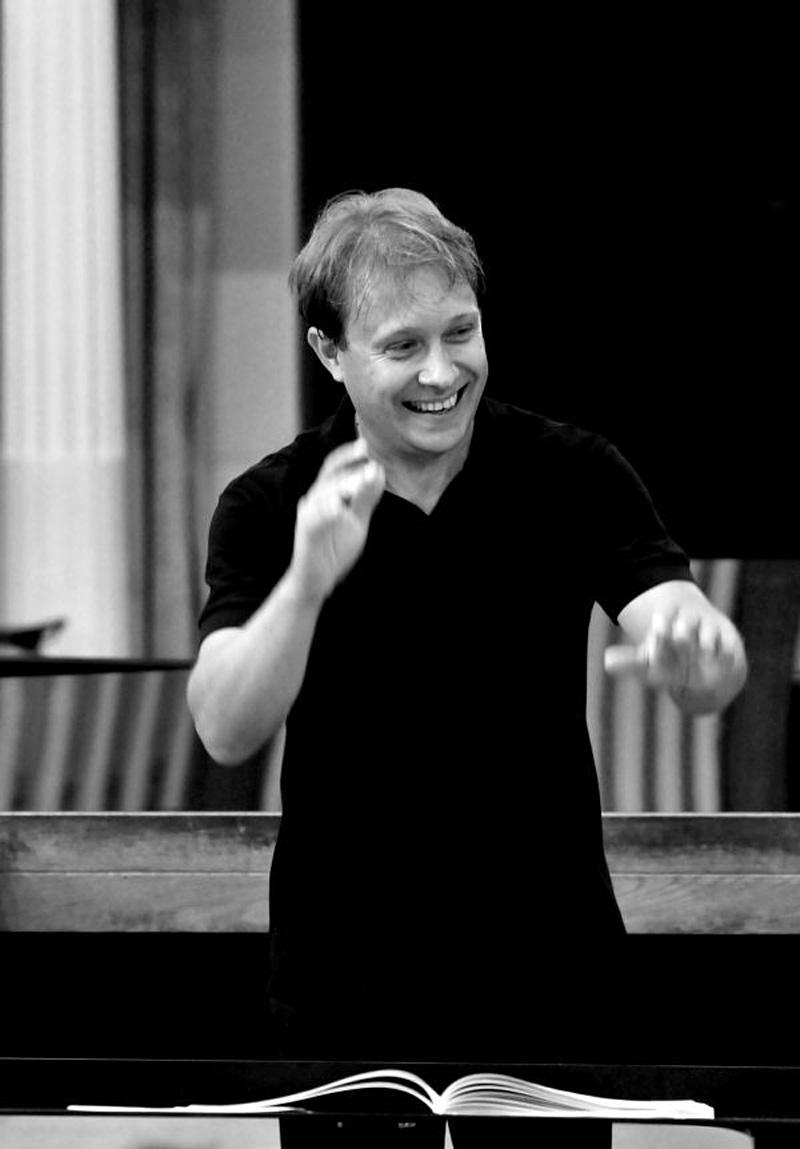The Seattle Symphony’s choice of 36-year-old Ludovic Morlot as its next music director might at first look like a bandwagon jump. Young is the new black in the classical world, especially since 2007, when the L.A. Philharmonic tapped then-26-year-old Gustavo Dudamel—that combination of Michael Jackson, Michael Jordan, Taylor Lautner, and Mozart—to be its conductor. But it’s really a continuation of a Seattle Symphony tradition: Gerard Schwarz was but 38 when he took the job (conductors count as “young” until 40), and his predecessor, Rainer Miedel, was 37.
SSO hosted a series of guest conductors this season, each the subject of speculation and scrutiny. Morlot appeared twice, the second time in April as a substitute for Roberto Abbado, detained by the Iceland volcano. That weekend’s scheduled soloist, cellist Xavier Phillips, was also grounded, and Morlot had to reprogram the concert at the last minute. The grace he showed under fire led to unanimous approval by the search committee.
Committee member and SSO bassoonist Seth Krimsky says they solicited grapevine reports on each guest conductor from colleagues in other orchestras. Even among hard-to-impress players in top ensembles—Boston, Chicago, New York—there was universal praise for Morlot, from his technique to his demeanor, says Krimsky. Working with the conductor in Seattle “was more like playing with him than for him,” Krimsky adds. “He can let go and offer the players some freedom.”
Despite Morlot’s dazzling guest-conducting resume (including Philadelphia and the Concertgebouw in Amsterdam), his appointment, announced last week, to take over the SSO for six seasons starting in fall 2011 will be his first music directorship. His most recent full-time gig was assistant conductor of the Boston Symphony, 2004–07, where he worked under James Levine—an unparalleled technician who polished his other orchestra, that of the Metropolitan Opera, into arguably the world’s best. We’ll see how much of Levine’s skill Morlot may have soaked up. How might the Morlot era diverge from the traditions Schwarz established over a quarter-century?
Playing: Before international travel was easy and orchestras hired players from all over, regional differences in performing styles were more pronounced; you could tell in two bars a French orchestra from a Russian or Viennese one. Schwarz has always drawn from the SSO a weightier, darker, Eastern European kind of sound—stunning for Mahler and Shostakovich, but not ideal for, say, 18th-century works or anything that sounds best lithe and transparent. If Morlot leads the SSO toward a leaner, cleaner, more traditionally “French” sound, it could revitalize its performances of such repertory and shed new light on familiar SSO specialties.
Fund-raising/audience-building: Schwarz was a virtuoso at soliciting donations, but this’ll be a new responsibility for Morlot. Among current and potential big-money donors, of course, his continental charm won’t hurt. The SSO’s challenge will be to translate the classical-world buzz surrounding Morlot into public recognition and a lasting fan base beyond everyone’s initial curiosity—one that’ll include the under-30 attendees the orchestra needs to ensure its future. L.A. is putting the Venezuelan Dudamel’s ethnicity to strategic use in reaching the city’s Latino communities; the SSO won’t be able to take advantage of any such angle with Morlot, just another in a century-long line of Europeans hired to run American orchestras.
Recording: With more than 100 recordings on various labels (Delos, Artek, Naxos, and others), Schwarz and the SSO have been just about the most prolific conductor/orchestra team since the 1960s heydays of Leonard Bernstein and Eugene Ormandy at Columbia. It would be a shame for the SSO to lose that visibility, and that income, under Morlot, and I hope his plans include more CDs.
Programming: Here’s where Morlot could truly leave a mark. Though Schwarz pays a gratifying amount of attention to modern music, most of it comes from the more conservative American mainstream, via connections he made during his career’s pre-Seattle, New York City phase. Morlot, on the other hand, has a regular relationship with Paris’ hardcore-modernist Ensemble Intercontemporain. Krimsky points to Morlot’s conducting repertory this summer (in Boston, Philadelphia, and elsewhere) as an indicator of his interests. It includes music by Harrison Birtwistle, George Benjamin, and Helmut Lachenmann, contemporary Europeans of a kind never heard in Benaroya Hall. (The piece Morlot stepped in to lead, canceled when Phillips couldn’t be here to play it, was by ear-tickling colorist Henri Dutilleux, a favorite composer of his.)
Assuming a skittish board doesn’t discourage it, repertory like this would be a thrilling addition to SSO concerts, introducing players and listeners alike to new realms and new voices beyond Schwarz’s Juilliard pipeline. It could also help boost the SSO to the recognition level of ensembles in L.A. and San Francisco, both considered innovative models of what a 21st-century orchestra can be.







